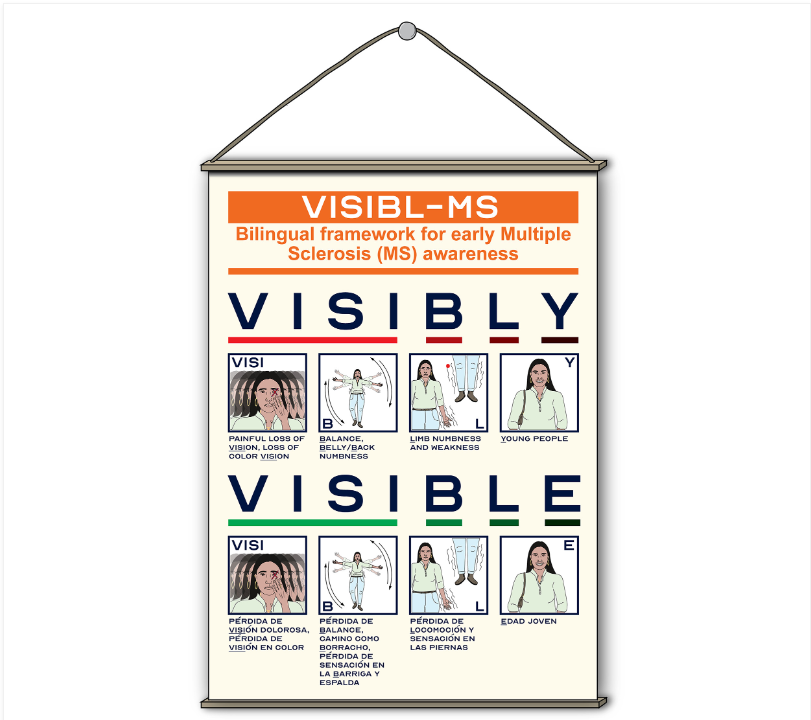| Listen to our audio presentation: High Blood Pressure Information |
At the University of Connecticut, a new bilingual resource aims to bridge the gap in awareness and early detection of multiple sclerosis (MS), particularly among at-risk populations. Dr. Jaime Imitola, chief of UConn Health’s Division of Multiple Sclerosis and Translational Neuroimmunology, emphasizes the importance of recognizing early signs of MS to improve outcomes.
Social determinants of health, such as education, cultural, and language barriers, can lead to delays in diagnosing and treating MS. These delays result in patients missing out on timely interventions to prevent disability and disease progression. To address this issue, Dr. Imitola and his team have developed a mnemonic tool, “VISIBL-MS,” to help patients, medical students, and providers remember the critical symptoms of early MS. The mnemonic stands for:
Vision changes (painful vision loss, loss of color vision, or double vision)
Balance problems
Strength (limb weakness)
Inumbness (limb numbness)
Belly or back numbness or balance problems
Limb weakness or numbness
Young people (MS often affects young adults)
The tool has been designed to be clear, succinct, and informative, with the aim of integrating it into medical education and making it accessible to patients and families. It is available in both English (“VISIBLY”) and Spanish (“VISIBLE”).
Dr. Imitola’s research, published in the Multiple Sclerosis Journal, highlights the need for improved awareness and education about MS, especially in Connecticut, where the prevalence of the disease is higher than average. He points out that diverse patients often experience worse outcomes due to biological factors exacerbated by social determinants.
The “VISIBL-MS” tool is part of UConn Health’s broader strategy to address gaps in care and raise awareness among minority populations, including African Americans and Hispanics. Early awareness and treatment can change the trajectory of the disease, leading to better outcomes for patients.
Additional Insights into Multiple Sclerosis
Multiple sclerosis is a chronic autoimmune disease that affects the central nervous system. It occurs when the immune system mistakenly attacks the protective covering of nerve fibers, causing inflammation and damage. This damage disrupts communication between the brain and the rest of the body, leading to a wide range of symptoms, including fatigue, mobility issues, and cognitive challenges.
Previous research has identified several risk factors for MS, including genetic predisposition, environmental factors (such as low vitamin D levels and smoking), and certain viral infections. There is also evidence to suggest that lifestyle factors, such as diet and exercise, can influence the course of the disease.
While there is no cure for MS, advancements in treatment have significantly improved the quality of life for many patients. Disease-modifying therapies can help reduce the frequency and severity of relapses, slow the progression of the disease, and manage symptoms. Ongoing research continues to explore new treatment options and potential strategies for prevention.
The development of tools like “VISIBL-MS” and continued efforts to raise awareness and educate both the medical community and the public are crucial steps in improving outcomes for people living with multiple sclerosis.
Image Credit and Resources: https://doi.org/10.1177/1352458524122 Sage Journals (2024)

